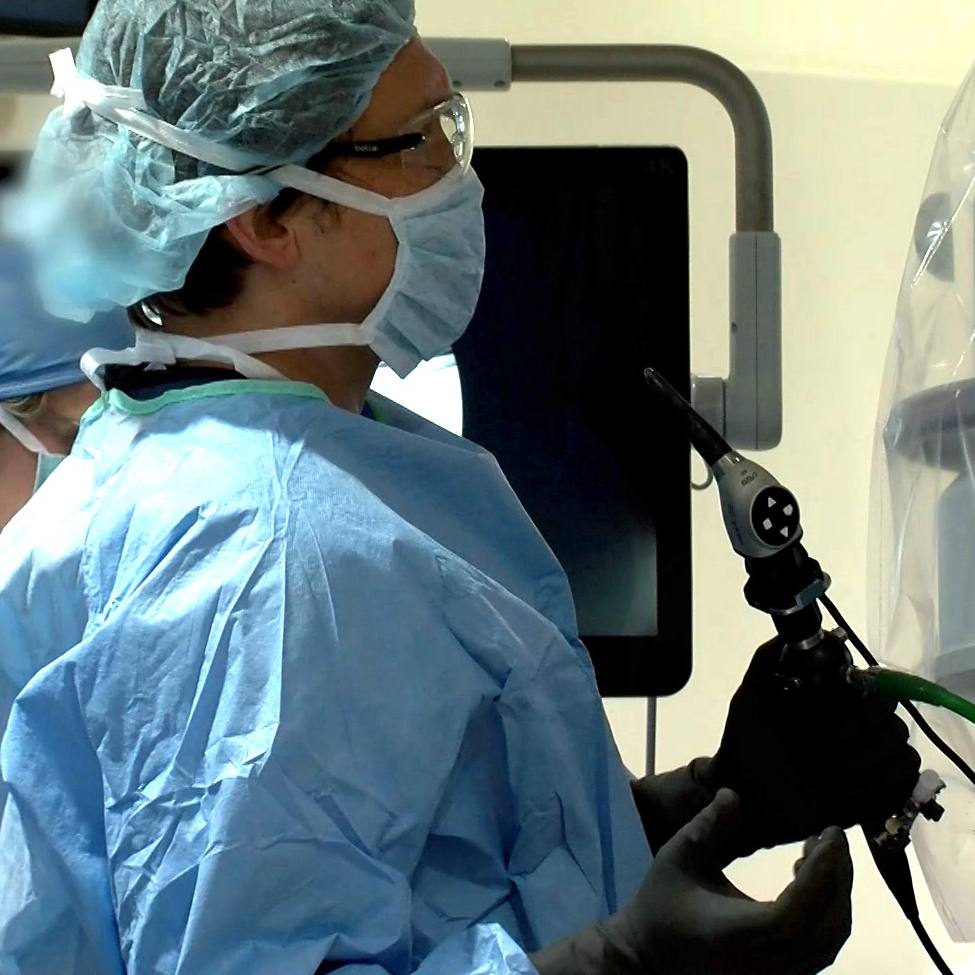
Mayo Clinic is in the midst of a digital pathology initiative that will integrate digital infrastructure, automate highly manual processes, and employ artificial intelligence to advance clinical capabilities and care for patients. As this digital pathology initiative advances, a clear illustration of its transformative power is taking place now in Mayo Clinic’s Department of Dermatology.
Dermatology at Mayo Clinic is organized into three divisions: clinical dermatology, surgery, and dermatopathology. The department’s seven dermatopathologists, supported by Mayo’s Department of Laboratory Medicine and Pathology, became early adopters of digital pathology in March. After a successful pilot in 2020, these physicians rapidly transitioned from evaluating tissue sections mounted on glass slides through the lens of a microscope to rendering diagnoses on high-resolution digitized images of the slides.
The availability of digitized images on every skin biopsy in an easy-to-navigate platform has revolutionized Mayo’s dermatopathology practice, and it’s provided significant enhancement to patient management and education for trainees in both Dermatology and Laboratory Medicine and Pathology.
Going from digital bench to bedside
An invaluable tool for clinicians, digital pathology images now are only a click away in Mayo Clinic’s electronic medical record. That’s an important change. For example, when Mark Davis, M.D., chair of the Department of Dermatology, recently received a pathology report indicating a diagnosis of skin cancer for one of his patients, he wanted a surgeon to weigh in on the next steps. In the past, that would have involved retrieving the glass slides before a discussion of the case could take place. Not anymore.
Dr. Davis contacted his surgical colleague Christian Baum, M.D. Thanks to digital pathology, they were able to immediately access the same high-resolution images that had been viewed by the dermatopathologist who was responsible for the report. Dr. Baum and Dr. Davis reviewed the images and together agreed on a treatment plan — all in just a few minutes.
“Digital pathology has changed the way we can collaborate and consult with one another,” Dr. Davis says. “It makes it simple to share and discuss cases with no lag time. It is a huge step forward.”
Advancing the practice
Digital pathology has been a priority within Mayo’s Department of Laboratory Medicine and Pathology since 2018. Designed as a multiphase program, the digital pathology initiative will establish Mayo Clinic as a leader in the application of digital pathology.
“Digital pathology represents the most transformational change in anatomic pathology since the introduction of the light microscope,” says Joaquin Garcia, M.D., a physician in Mayo Clinic’s Division of Anatomic Pathology and chair of the Digital Pathology Practice Subcommittee in Laboratory Medicine and Pathology.
Dr. Garcia notes that the immense slide scanning effort currently underway will transition the department’s analog practice to a digital enterprise, generating data that can be integrated with other data sets to improve overall patient care.
“Leaders and subject matter experts from throughout Mayo Clinic have established infrastructure for the deployment of this disruptive technology, as well as roadmaps for education, research, innovation, biopharma, and global partnerships,” Dr. Garcia adds.
“THE COMMITMENT OF OUR LABORATORY STAFF, PROJECT MANAGERS, OPERATIONS MANAGERS, AND CONSULTANTS HAS SET THE STAGE FOR MAYO CLINIC TO REDEFINE CLINICAL STANDARDS FOR EFFICIENCY, QUALITY, PATIENT SAFETY, AND DIAGNOSTIC EXCELLENCE IN ANATOMIC PATHOLOGY BY LEVERAGING ARTIFICIAL INTELLIGENCE.”
Several years of dedicated work building infrastructure came to fruition with the successful completion of the project’s first phase in November 2020. As phase two started in late 2020, Dermatology was at the head of the line to begin the process of practice digitization.
“Dermatopathologists have experienced the joy of engagement with the digital pathology initiative from the start. We are grateful to the Department of Laboratory Medicine and Pathology for the smooth, rapid implementation of digital pathology practice at Mayo Clinic,” says Nneka Comfere, M.D., chair of the Division of Dermatopathology and Cutaneous Immunopathology.
The dermatopathologists conducted a digital pathology pilot program during the last quarter of 2020, interpreting digitized slides on all extramural consult cases they received via Mayo Clinic Laboratories. In March, the division transitioned to digital pathology for interpretation of all specimens received from Mayo Clinic’s Rochester campus and Mayo Clinic Health System.
The group was a natural early adopter because pathology plays an integral role in the development of medical and surgical dermatology care plans. With glass slides, which can only be in one place at a time, review of the pathology by one member of a multidisciplinary team meant a delay in access for another. With digital pathology, that concern — and others like it — are gone. “In the past, it wasn’t uncommon to order slides and only receive a subset of the ones you needed. It also took a day or two after filling out and sending in a request for the slides to be pulled and sent to you,” Dr. Baum says.
“NOW, WE SEE ALL THE SLIDES WE NEED, AND WE CAN COMPARE THEM TO ONE ANOTHER ON THE SCREEN. DIGITAL PATHOLOGY OFFERS IMMEDIATE REVIEW — A HUGE BENEFIT. IT’S BEEN REVOLUTIONARY FOR OUR PRACTICE.”
Enriching education
Not only has digital pathology transformed the practice, it has also greatly enhanced the training of residents and fellows. Dermatopathology is a key component of Mayo Clinic’s Dermatology and Anatomic and Clinical Pathology residency programs. In particular, Dermatology residents need to learn basic dermatopathology and how to interpret histopathologic features in context with the patient’s clinical problem to optimize clinical decision-making.
Review of pathology slides on biopsies from their patients has been a long-standing expectation of dermatology trainees. But that involved the time- and space-consuming processes of sorting glass slides, delivering them to the residents, and then filing slides after review. Since adoption of digital pathology, residents now can quickly and easily access all the digitized slides they need to review.
Looking forward, Dr. Davis sees nothing but growth and innovation in the use of digital pathology. He envisions a time when digital images can be reviewed with referring physicians outside Mayo Clinic, offering new opportunities for collaboration, as well as more efficient assessment of the appropriate level of care a patient needs.
“OVERALL, DIGITAL PATHOLOGY HAS BEEN A SUPERB ADDITION TO OUR PRACTICE,” DR. DAVIS SAYS. “IT’S MAKING A SIGNIFICANT DIFFERENCE FOR OUR DERMATOPATHOLOGISTS, SURGEONS, CLINICIANS, TRAINEES, AND MOST OF ALL, OUR PATIENTS. THERE REALLY IS NO DOWNSIDE HERE.”
Dr. Garcia agrees: “The department’s early adoption and change management related to digital pathology has provided immediate benefit to patients. And this is just the beginning.”
Learn more about research at Mayo Clinic Laboratories.
____________________________________________
Other Mayo Clinic medical research websites:
- Research at Mayo Clinic
- Discovery’s Edge
- Advancing the Science
- Forefront
- Mayo Clinic Center for Individualized Medicine
- Center for Regenerative Medicine
- Center for the Science of Health Care Delivery
Related Articles







